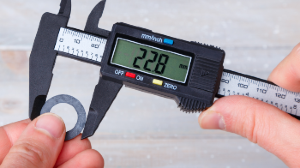Home » Technical
Technical Info

Web Seal can support your research, design and engineering efforts with expertise from our sealing industry experts.
Designing Your Seal or Gasket
We’re only successful when our customers are successful. Web Seal is ready to offer a variety of services to help you in your design process:
- The latest seal technology expertise
- Early-stage R&D planning assistance
- Material samples
- Prototypes
- Product training
- Lunch-&-Learn presentations
- Half- or full-day workshops
To optimize the performance of your seal or gasket, it is important that your design is based on an accurate assessment of the following early-stage design criteria:
Static or Dynamic Application
What, if any, motion is involved in the components being sealed or in adjacent components?
- Static design, no appreciable movement
- Dynamic design
- Rotary/radial movement
- Reciprocating movement
- Oscillating movement
Operating Environment
What environmental conditions are involved, including temperature, pressure and media?
 Temperature considerations
Temperature considerations
- Minimum/maximum temperature
- Normal operating temperature for seal
- Continuous or intermittent temperature
- Temperature of adjacent equipment
- Pressure considerations
- Internal/external pressure on seal (PSI)
- Closure pressure – desired squeeze percent
- Media considerations
- Chemical compatibility of elastomer selected
- Continuous or infrequent contact with media
- Liquid – brine or fresh water, acids, chemicals, edibles or potables, oils, fuels, molten metals, plating, hazardous/toxic, other
- Gas – air, steam, inert, hazardous/toxic, other
- Particulates – ash, dust, foods, salts, lubricants, solid waste, tar, hazardous/toxic, other
- Radiation
- EMI/RFI – electromagnetic interference, radio frequency interference
- Noise
- Surface finish of components
- Surface finish recommendations differ based on whether the component is static or dynamic and the seal material selected (RMS, Ra, Rp, Rz, Rmr)
Mechanical Properties
What physical properties are required for a successful seal?
- Optimal hardness (durometer or density)
- Tear strength
- Tensile strength
- Elongation
- Modulus
- Compression set
- Abrasion resistance
Industry Standards and Specifications
Each industry has its own unique regulations and quality standards such as:
- ASTM
- UL
- CSA
- IEEE
- NSF61
- SAE
- NEMA
- FDA
- MIL-SPECS
Prototypes
Web Seal can supply prototypes, depending on the types of products you require.
Some prototypes may be able to ship tomorrow at minimum charge. Others might take up to 14 weeks and involve significant tooling costs. As with any other aspect of the seal design process, the design of a prototype involves knowing the requirements of your application.
Submit drawings to sales@websealinc.com. Web Seal will evaluate your part geometry and other specs to provide a prompt quotation for a prototype. If you need to test options, Web Seal can provide prototypes in different materials and thicknesses.

